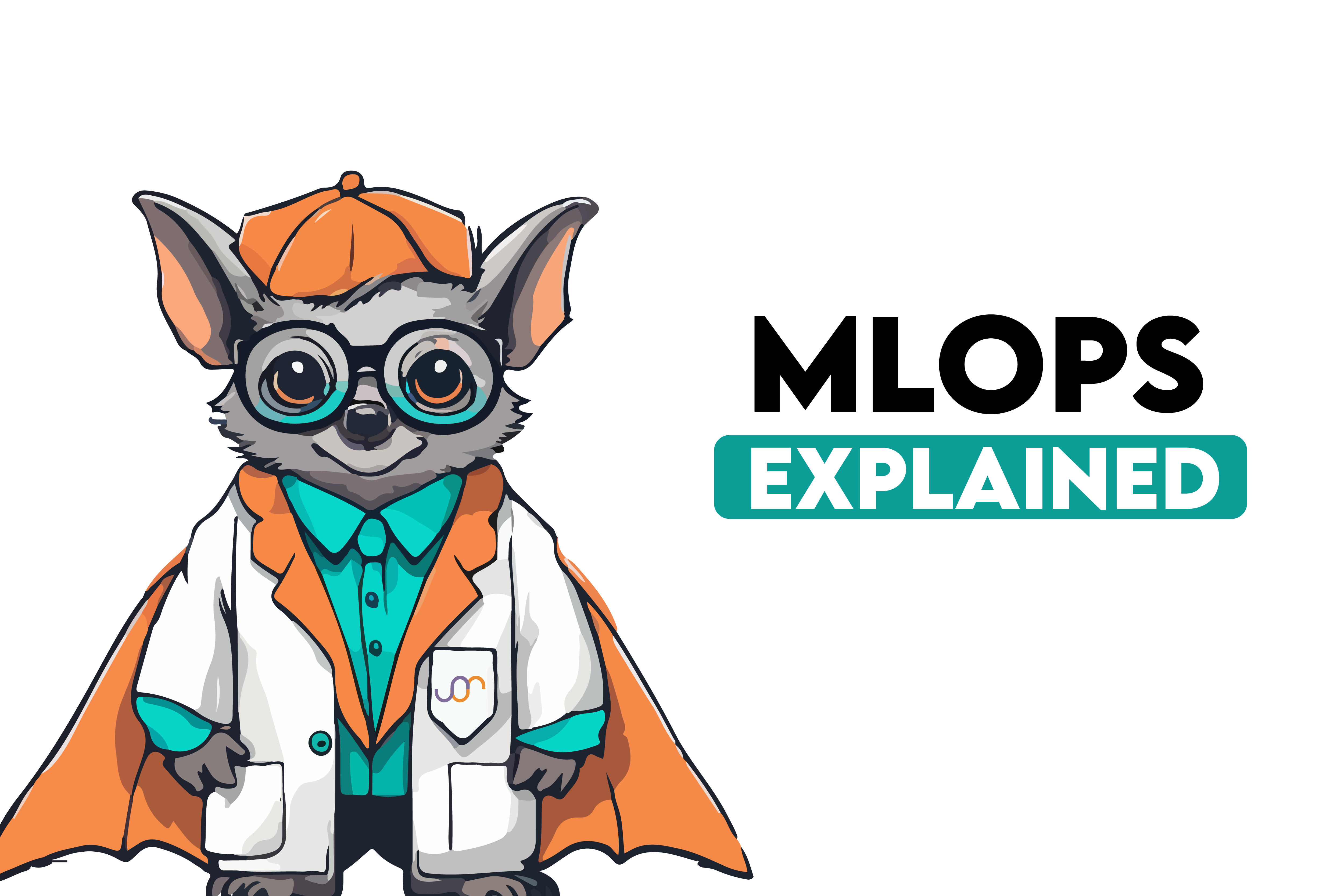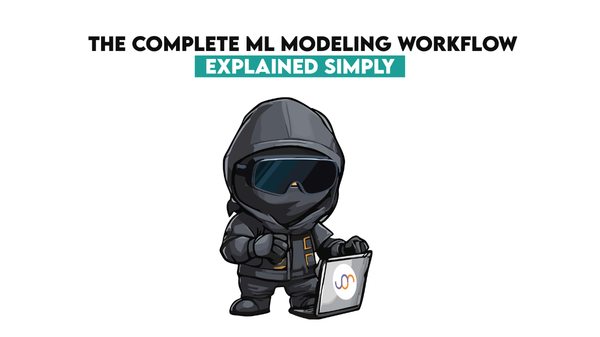What is MLOps? - Machine Learning Operations Explained

 Written by:
Written by:Nathan Rosidi
MLOps stands as a bridge between machine learning models and real-world applications for seamless AI integration and innovation.
In an era where AI is integrated with every aspect of our lives, a small team in Silicon Valley stumbled upon a breakthrough that could change how we interact with machine learning.
By shedding light into the depths of MLOps, we discover its role in bridging the gap between machine learning models and real-world applications.
I'll guide you through the intricacies of MLOps by showing how it expedites the deployment, monitoring, and management of machine learning models.
What is Machine Learning Operations (MLOps)?
MLOps stands for Machine Learning Operations and refers to a collection of best practices proposed to unify a machine learning system's development (Dev) and operation (Ops).
MLOps integrates some of the important elements of DevOps philosophy into the domain: improved communication, collaboration, and integrated work of data science and operation professionals.
In that sense, MLOps is designed to cover those unique challenges machine learning systems face.
Key Components of MLOps

MLOps have different components:
- Data Management: Data management includes processing data acquisition, storage, and preprocessing data through specific technologies. Proper data management can ensure good quality and accessibility of data for the training of models.
- Model Development and Training: Models are developed through different machine learning algorithms, and then the developed models are trained using data. It includes proper frameworks and tools for model development.
- Model Versioning: Like code versioning in software development, this approach keeps different versions of models along with the related data sets, therefore facilitating the management of model changes and iterations.
- Deployment: It is the process of integrating a trained model into a production environment, where the latter can make predictions or take action based on new data.
- Model Monitoring and Management After deployment, the models must be monitored occasionally for performance and accuracy. Model management updates the model in response to data or business needs changes.
- Automation and Orchestration: Automation in workflows and orchestration within the machine-learning pipeline is cardinal at scale. This implies automating processes in data preprocessing, model training, testing, and deployment.
- Collaboration and Governance: Mechanism to enable teaming across Data Scientists, Engineers, and Business stakeholders to collaborate in an AI project, with governance in place on ethical AI practice, security, and compliance.
This integration is the foundation of MLOps, where the teams generate, deploy, and manage their machine-learning models efficiently and effectively.
Key Benefits of MLOps
The organization gains several benefits from implementing MLOps within the flow of machine learning models. Some key benefits include
- Time to Market: MLOps has reduced the lifecycle of machine learning from the data preparation and model preparation stage to deploying it as a model. This reduces the time it takes to usher in production models.
- Improved Model Quality and Performance: The continuous workflow—integration, delivery, and monitoring—of models ensures models always perform optimally, delivering the most accurate results.
- Collaboration: MLOps improves collaboration that is part of the data scientists' tasks, of the developers and operational engineers to share goals and work together effectively.
- Scalability: MLOps' best practices and tools help scale machine learning operations so that effectively treating multiple models and big volumes of data becomes easy.
- Reproducibility and Traceability: MLOps enable versioning models and data, ensuring reproducible experiments and the traceability of changes through a clear history, thereby adding accountability and transparency.
- Cost Efficiency: It drives a dramatically reduced cost in performing operations surrounding projects in machine learning through automation of repetitive tasks and resource optimization.
- Regulatory Compliance and Security: MLOps allows governance and regulatory compliance due to the mechanisms that can be formed for auditing models, data privacy, and security measures.
MLOps included in machine learning projects will enable companies to easily deal with deployment and problems accompanying their maintenance of AI systems.
Tools and Technologies in MLOps
Several tools and technologies are a part of the MLOps ecosystem, developed to support the different stages in the ML lifecycle. Presented below are some of the most important tools and technologies that are generally used in MLOps:
- Data Management and Versioning: Tools like DVC (Data Version Control) and LakeFS help in data management and versioning, thereby allowing a project in machine learning to be reproducible and traceable.
- Experiment Tracking: MLflow platforms and Weights & Biases have inherent experiment tracking frameworks that enable tracking experiments, recording parameters and results, and allowing data scientists to compare and manage their experiments.
- Model Development Frameworks: A few of the popular libraries and frameworks supporting extensive support for various algorithms for the development of models in machine learning include TensorFlow, PyTorch, and Scikit-learn.
- Model versioning and registry: The versioning of models, which will contain the respective metadata and make it easy to track the right models, is handled by MLflow Model Registry and DVC.
- Workflow Orchestration and Automation: Apache Airflow and Kubeflow Pipelines can automate the ML workflow, from data preprocessing to model training and deployment. They, therefore, promise consistency and efficiency in the processes.
- Model Deployment: This is the process of deploying the developed models into the real world on a production scale using TensorFlow Serving, TorchServe, and Kubernetes such that they handle real-world workloads efficiently.
- Model Monitoring and Operations: This process involves monitoring models' performance and operational health using Prometheus, Grafana, and AI to alert respective teams in case of deviations from defined normalcy or thresholds.
- Version Control and Collaboration: Git and GitHub tools assist in version control and collaboration. They help control versions of the files and collaborate with a team of software developers on a project.
Such tools and technologies are the key parts of the MLOps toolkit, which help roll out, adopt, and practice MLOps in any project.
DevOps vs MLOps

Though DevOps and MLOps tend towards similar objectives as to how development and operations should take place, differences are brought in due to the challenges posed by machine learning projects. Following are the differences between MLOps and DevOps:
- Focus on data and models: DevOps focuses on the process of software development and emphasizes the integration, testing, and deployment of code, unlike MLOps, which involves data versioning and training of the model followed by deployment, thereby complementing the life cycle of machine learning besides the code.
- Data lineage and model versioning: In MLOps, the versioning of the model is highly versioned, including not just the code but also data and models. This is important for the ability to reproduce and understand the lineage of models—something usually not tackled in DevOps.
- Continuous Training and Monitoring: Where DevOps has continuous integration and deployment, MLOps includes continuous training and monitoring of the models. This reflects that models need to be continuously retrained with new data and that model performance needs to be monitored over time.
- Experimentation and Evaluation: Allows flexible experiments with different model architectures and their parameter settings. Tools for tracking experiments, results, and model evaluations are core to MLOps, while they are not at the heart of traditional DevOps.
- Working Together across Diverse Teams: MLOps requires closely collaborating with data scientists, data engineers, machine learning engineers, and operations teams. DevOps emphasizes the linkage between development and IT operations. MLOps adds another layer, integrating the roles focusing on data and model management.
- Scalability and Governance Challenges: MLOps will encounter challenges peculiar to scaling machine learning models and effectively governing these resources. Besides, it must be able to deal with governance, ethics, and compliance issues, which are comparatively more complex than what is usually met in software development.
In short, MLOps adapts and extends the principles of DevOps with the specific needs of machine learning projects, where the life cycle of the models, starting from development through deployment and monitoring, is end-to-end, dealing with data management, model versioning, and continuous improvement.
Best Practices in MLOps
Embracing MLOps requires the right devices and adherence to best practices, guaranteeing the smooth activity of AI work processes. Here are the absolute accepted procedures in MLOps:
- Automate the Machine Learning Lifecycle: Automate as much of the machine learning process as possible, from data preparation, model development, evaluation, and implementation. This approach minimizes human error and boosts productivity.
- Version Control Everything: Employ version control mechanisms for all components, including code, datasets, models, and experimental logs. This practice guarantees consistency, accountability, and the ability to revert to earlier iterations when necessary.
- Establish Continuous Integration/Continuous Delivery (CI/CD) for Models: Apply continuous integration and continuous delivery methodologies to machine learning projects, mirroring practices in software engineering, to ensure automated testing and seamless model deployment.
- Monitor Models in Production: Keep an eye on models once deployed, watching for any decline in performance or precision. Establish automated alerts for unusual activity and streamline the process for model updates and redeployment as required.
- Implement Model Governance and Ethics: Develop a framework that addresses ethical considerations, compliance, and data privacy. Ensure transparency in how models make decisions and use data.
- Collaborate Across Teams: Promote an environment of cooperation among data scientists, ML engineers, and operations staff to produce models that are not only accurate but also scalable and sustainable.
- Emphasize Data Quality: Ensure that data used for training and inference is high quality, addressing issues like bias, missing values, and noise. Regularly audit data sources and preprocessing steps.
- Document and Share Knowledge: Document models, data sources, experiments, and decisions. Share knowledge within the team and across the organization to build a learning and continuous improvement culture.
By following these procedures, organizations can boost the advantages of MLOps, guaranteeing that AI models are created, sent, and kept up productively and successfully, driving worth and development.
Real-World Applications

MLOps is not just a theoretical concept but also be applied across various industries to solve real-world problems. Here are some examples of how MLOps is used in practice:
- Healthcare: In healthcare, MLOps is used to deploy and manage models that predict patient outcomes, assist in diagnosis, and personalize treatment plans. Continuous monitoring ensures models adapt to new data, improving accuracy and patient care.
- Finance: Banks and financial institutions leverage MLOps to manage credit risk models, detect fraudulent transactions, and personalized customer services. MLOps ensures these models are up-to-date and perform well as new data enters.
- Retail: Retailers use MLOps to optimize inventory, recommend products, and manage supply chains. MLOps help quickly deploy models that adapt to changing consumer behaviors and market trends.
- Manufacturing: In manufacturing, MLOps facilitates predictive maintenance, quality control, and process optimization. Models are continuously monitored and updated to prevent downtime and improve efficiency.
- Autonomous Vehicles: MLOps supports developing and deploying models for autonomous driving, ensuring they can be updated with new data collected from vehicles to improve safety and performance.
- Entertainment: Streaming services apply MLOps to personalize content recommendations, enhance user experience, and optimize streaming quality. Continuous improvement of models is key to keeping viewers engaged.
These examples illustrate the versatility and impact of MLOps across different sectors. By enabling the efficient deployment and management of machine learning models, MLOps helps organizations harness the power of AI to drive innovation, enhance operational efficiency, and create more personalized customer experiences.
Conclusion
In summary, MLOps stands as a bridge connecting machine learning development and operations, aiming to streamline and enhance the deployment and maintenance of ML models.
The journey to mastering MLOps and becoming a proficient data scientist is paved with continuous learning and hands-on practice.
On StrataScratch, you would have options to solve many data projects and be able to reach their data, by using them, you can build your own MLOps. Remember, practice is the best way to learn.
Share


